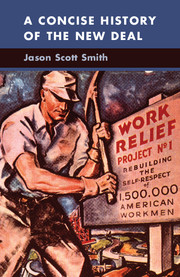3 - The New Deal at High Tide, 1934–1936
Published online by Cambridge University Press: 05 July 2014
Summary
Although the New Deal’s impact on American society was long-lasting, its apex was quite brief, beginning with the midterm elections of 1934 and concluding with FDR’s reelection in 1936. Why was the New Deal’s “high tide” so brief? The answer, in a word, was politics. Politics shaped American society and culture in a number of important respects during the Great Depression. Roosevelt and the Democratic Party scored unprecedented electoral victories in 1934. Instead of losing influence in these midterm elections, Democrats actually gained seats in both houses of Congress. Jimmy Walker, the former mayor of New York City, wrote gleefully to FDR advisor James Farley in the wake of the ballot counting, “That wasn’t an election, it was a census taking.” With this political advantage, New Dealers seized the moment: “Boys, this is our hour,” Harry Hopkins told his staff. “We’ve got to get everything we want – a works program, social security, wages and hours, everything – now or never.”
The strengthened Congressional majorities renewed and inspired reformers, who overcame many of the obstacles inherent in the American political system to craft a set of landmark achievements, highlighted by the 1935 Social Security Act. In so doing, New Dealers secured for the Democratic Party the long-term allegiance of many Americans, who returned FDR to the presidency in 1936 in a truly resounding fashion. These triumphs, both at the ballot box and in creating new institutions, were political to the core. However, the forces that these reforms unleashed would soon constrain the options available to the New Dealers. This chapter probes the ways party politics shaped the reforms initiated during FDR’s “second hundred days,” which followed the 1934 midterm elections.
- Type
- Chapter
- Information
- A Concise History of the New Deal , pp. 62 - 98Publisher: Cambridge University PressPrint publication year: 2014



